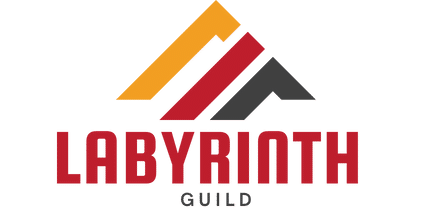The advent of wearable technology has brought about a revolution in the sphere of sports and fitness. The world of competitive rowing is no exception. Wearable tech in rowing, including smartwatches, heart rate monitors, and GPS devices, is transforming the way athletes train, improve and compete. Wearable tech is helping competitors to optimise their performance – right from the timing of strokes to maintaining an optimal heart rate and tracking distance covered.
In this informative piece, we will delve into how wearable technology is enhancing training outcomes, offering new insights into the athlete’s performance, and ultimately, setting the stage for a new era in the sport of competitive rowing.
Also to see : What’s the Impact of Altitude Training on Long-Distance Runners?
Utilising Real-Time Feedback
Let’s start with the fundamental advantage of wearable tech – real-time feedback. In the heat of the competition, every stroke counts. But how does one maintain a consistent rhythm and power output? The answer lies in the smart use of wearable technology.
Wearable devices like GPS wristwatches and heart rate monitors offer instant feedback on an athlete’s performance. This information is not only vital for the rower but also for the coach who can monitor and adjust the training program accordingly.
This might interest you : How to Incorporate Sports Psychology in Youth Soccer Training?
The athlete can track their heart rate, stroke rate, speed, and even the force applied per stroke. This real-time feedback enables them to make in-the-moment adjustments, helping them maintain optimal performance levels throughout the training session or competition.
Individualising Training Programs
Wearable technology can also have a massive impact on tailoring individual training programs. No two rowers are the same. Each athlete has different strengths, weaknesses, and endurance levels, and hence, their training needs vary.
Wearable tech can provide detailed insights into an athlete’s performance, such as their aerobic capacity, stroke rates, and power output. These data points can be used to create a personalised training regimen, designed to maximise the strengths of each rower and address their specific areas of improvement.
By incorporating wearable tech into their training routine, rowers can ensure that their workouts are targeted and efficient, leading to faster progress and improved results.
Enhancing Recovery and Preventing Injuries
The role of wearable tech extends beyond the training track. Recovery and injury prevention are as critical to an athlete’s performance as the training itself.
Wearable tech, such as sleep trackers and heart rate variability (HRV) monitors, help rowers track their recovery status. Sleep trackers monitor the quality of sleep, a vital factor for recovery. HRV monitors, on the other hand, measure the variation in time between heartbeats – an important indicator of stress and recovery.
If an athlete is not recovering adequately, it can lead to a decline in performance and even injuries. By keeping a regular check on recovery metrics, athletes can tweak their training intensity, duration, and rest days to ensure they are fully recovered and ready for the next session.
Tracking Progress Over Time
The ability to track progress over time is another significant advantage of wearable tech. Wearable devices provide a plethora of data, from the number of strokes per minute to the distance covered in a training session.
These data points, recorded over a period, create a detailed performance map of the athlete. This allows the athlete and the coach to track improvements, identify any persistent issues or areas of concern, and adjust the training plan accordingly.
An upward trend in performance data can be a motivating factor for the athlete, cementing the belief in their training regimen. Conversely, any decline or plateau in performance can be an early sign that the athlete needs to modify their training or focus on recovery.
Improving Teamwork and Synchronisation
Finally, wearable tech can play a crucial role in improving teamwork and synchronisation – two critical aspects of successful rowing.
In rowing, it is not just about individual performance. A high degree of synchronisation is needed among the team members for the boat to move swiftly and efficiently through the water.
Wearable tech like smartwatches can help in achieving this. They can monitor the timing and power of each rower’s strokes, allowing the coach to identify any discrepancies and work on them. This can lead to better coordination, improved boat speed, and ultimately, a higher chance of winning.
The opportunities offered by wearable technology in the field of competitive rowing are immense. By providing real-time feedback, individualised training, enhanced recovery, progress tracking, and improved teamwork, wearable tech is reshaping the future of this sport. It’s a game-changer, setting new standards for performance and success in competitive rowing.
The Integration of Wearable Technology and Motion Capture Devices
In the ever-evolving field of sports technology, wearable inertial sensors and motion capture systems are proving to be gold standards in tracking and enhancing athlete performance. This especially holds true for competitive rowing, where precision, power output, and teamwork are at the core of success.
The principle behind inertial sensors is simple, yet effective. They measure the velocity, orientation, and gravitational forces using a combination of accelerometers, gyroscopes, and sometimes magnetometers. When integrated into the wearable devices, they offer valuable insights into the sport-specific movements of the rower, including stroke rate, stroke timing, and boat speed.
Optical motion capture systems, on the other hand, use cameras to record the movement of reflective markers placed on the athlete’s body. This data can then be used to create a 3D model of the rower’s movement, which can be analysed in real-time or post-training.
For instance, the coach can use the data from the wearable tech and motion capture devices to detect any anomalies in the stroke technique, identify the cause of any performance decline, and modify the training programs accordingly.
The combination of wearable tech and motion capture also helps in injury prevention. By analysing the rower’s movements, one can identify any potentially harmful patterns or imbalances that could lead to injuries. As a result, corrective measures can be taken in a proactive manner, ensuring the athlete’s longevity in the sport.
A systematic review of various studies available on Google Scholar and Scholar Crossref further validates the efficacy of combining inertial sensors and motion capture in improving training outcomes in rowing.
Wearable Tech: The Future of Competitive Rowing
The integration of wearable technology in competitive rowing is not just a trend, it’s the future. The real-time feedback, individualised training programs, improved recovery tracking, and enhanced team synchronisation offered by wearable devices are revolutionising the way athletes train and compete.
Moreover, the continuous advancements in technology are paving the way for even more sophisticated wearable devices. For instance, future devices could offer real-time data on lactic acid levels, muscle oxygenation, and energy expenditure. This could provide the athletes and coaches with an even more comprehensive overview of the rower’s physical condition and performance.
The possibilities are endless, and with every new innovation, athletes and coaches gain another tool to refine their training methods and strategies.
In conclusion, wearable tech stands as a powerful ally in the pursuit of excellence in competitive rowing. By leveraging real-time data, athletes can optimise their performance, reduce the risk of injuries, and stay ahead of the competition. As wearable technology continues to evolve, we can expect to see further improvements in training outcomes and race performances, setting a new standard of excellence in the sport of rowing.











